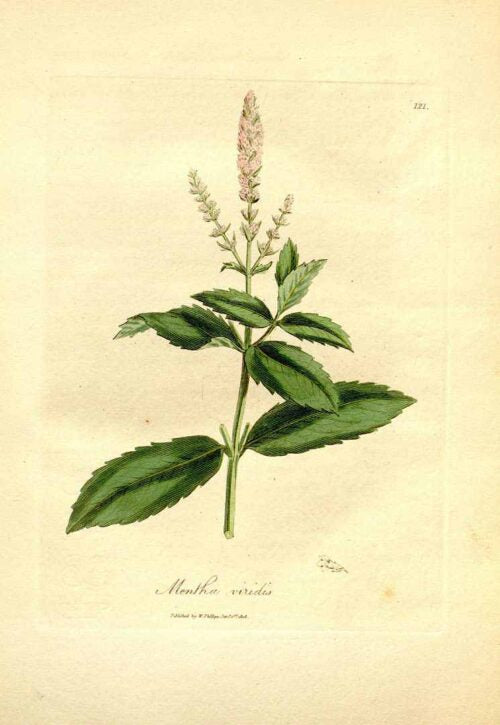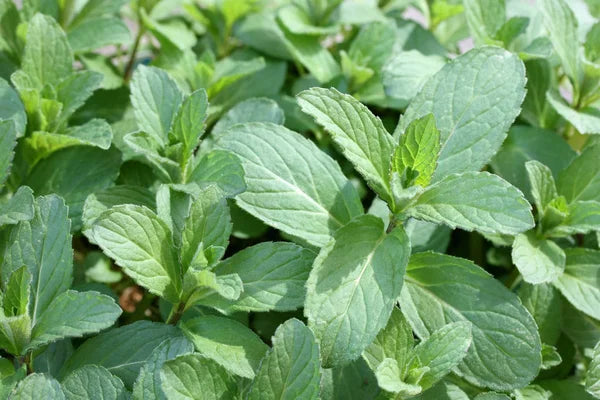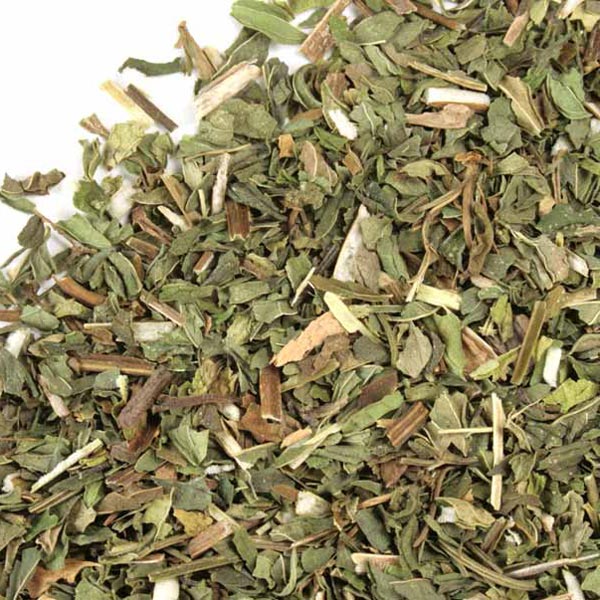Spearmint leaf (Egypt) cut and sifted
Spearmint leaf (Egypt) cut and sifted
Couldn't load pickup availability
Spearmint leaf (Egypt) cut & sifted
Mentha spicata
Throughout history, spearmint has been celebrated for its harmonizing properties in herbal infusions. Not only does it enhance the effects of other herbs, but it also brings a sense of pleasure and comfort to those who consume it. This versatile plant features in a wide range of herbal formulas, supporting the nervous, digestive, urinary, reproductive, and cardiovascular systems.
Spearmint is a mild calming agent and a gentle antispasmodic. Renowned 19th-century Physiomedicalist William Cook described its action as “quickly diffused throughout the nervous system, especially influencing the nervous peripheries.” This aligns with the principles of Chinese medicine, where mints are classified as herbs that release tension (or "wind") and relax constricted skin pores. By promoting diaphoresis (sweating), spearmint can help reduce fevers. In Ayurveda, spearmint is considered high in the ether element with a sattvic quality, promoting clarity, lightness, and a sense of calm, while removing stagnation within the body and mind.
Western herbalists praise spearmint for its calming and relaxing properties, making it an excellent remedy for anxiety, stress, and insomnia. Whether through tea or essential oil diffusion, it soothes the nervous system. When paired with ginger (Zingiber officinale), it can address sudden anxiety that manifests in the stomach or “nervous fevers.” Spearmint is also effective for relieving headaches and migraines.
Its opening and cooling qualities extend to the respiratory system, making spearmint a gentle yet effective herb for addressing colds, flus, and lung congestion. It pairs well with more potent herbs to ease symptoms and can be combined with elderflower (Sambucus nigra or S. canadensis) to enhance its diaphoretic (sweat-inducing) effects, particularly for reducing fevers in both adults and children. Spearmint tea can also be added to baths for similar results.
Perhaps best known for its digestive benefits, spearmint is a trusted remedy for stomach discomfort. While milder than peppermint, it is highly effective for easing gas, bloating, nausea, and vomiting. It relaxes gastrointestinal muscles and is suitable for all Ayurvedic doshas. A mild tea works well for vata, a medium infusion for pitta, and a stronger tea for kapha.
Spearmint’s relaxant qualities make it a particularly effective diuretic, even surpassing peppermint in this regard. Gentle and widely tolerated, it is a staple in pregnancy teas and remedies for children. A spearmint tea or bath can soothe colicky babies, ease children’s fevers, calm tummy aches, and reduce irritability. It also combines beautifully with mineral-rich herbs such as nettle (Urtica dioica), raspberry leaf (Rubus spp.), oatstraw (Avena sativa), alfalfa (Medicago sativa), red clover (Trifolium pratense), and dandelion (Taraxacum officinale) leaf for nourishing blends, such as Baby Bump Brew©.
Topically, spearmint can be used in baths or as a compress to calm itchy skin, reduce joint pain and swelling, and relieve bug bites, cold sores, and rashes.
In sum, spearmint is a gentle yet powerful herb suited for a wide range of applications—from calming the mind and body to soothing the stomach and skin. Its versatility and tolerability make it a valuable addition to any herbal repertoire.
Ways to Use:
Bath, Cream, Decoction, Food, Glycerite (fresh), Infusion, Paste, Salve, Steam, Tincture, Wash
Actions:
Analgesic, Aromatic, Carminative, Diaphoretic, Diuretic, Nervine, Refrigerant, Relaxant, Stimulant
Taste:
Astringent, Pungent, Sweet
Energy:
Cooling, Drying
Share



